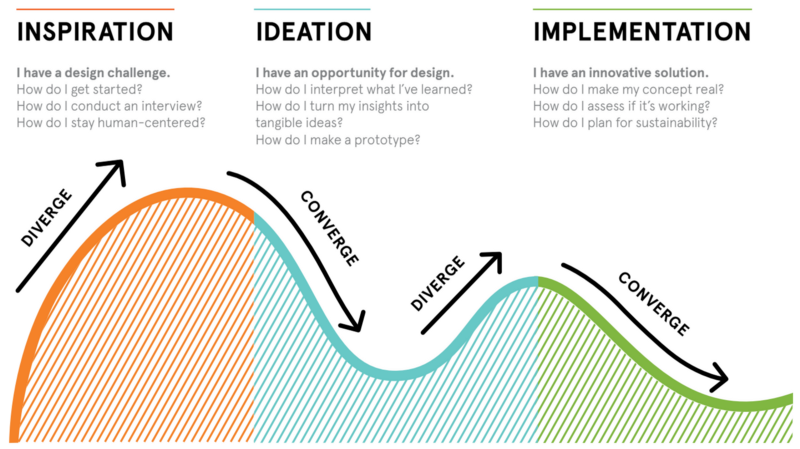Have you ever heard of innovation in the company when introducing a new tool that promises certain benefits? Was it really an innovation? Has it brought real benefits? In most cases when the company decides to introduce a new instrument it has to face a very high adoption cost and the real benefits are much lower than expected. One of the most frequent reasons for this failure is that users who need to use the new tool feel forced to change their modus operandi without finding help for their daily problems.
With widespread digitalization, technology is no longer a driver of innovation, innovation in the company, but a facilitator of innovation if calibrated to the real needs of people. The value that this brings to people is the real key!
In this pill we show you the 3 principles of Design Thinking that led to the success of this methodology in innovation processes:
- Problem Solving Attitude
- Human Centred Design
- Iterative approach
1. Problem Solving Attitude
The ultimate aim of the design thinking methodology is to intercept problems and develop the best solution for each of them. With this approach the context is observed and studied, problems are intercepted and possible solutions are drawn. These are then made in prototype and tested with the user, then reviewed based on the feedback received. With this approach, we face problems of different magnitudes, even very complex ones. The focus remains on solving the problem. In this a lot also plays the creative component, and the involvement of inexperienced people who, as we will see in the next pills, manage to make a contribution that is not contaminated by the conformism of the sector experience (what often leads to saying) it is always like this and it went well, why change? “).
2. Human-Centered Design
This is the most popular feature of Design Thinking. With a “people-first” approach it is possible to intercept the real needs of the user, usually not visible to management. In an empathic way, we observe and analyze what is called the pains and the gains of the user, that is his frustrations, but also his interests. This bottom-up approach, which starts from the end-user to study the best implementation for achieving the business objective, also brings with it a strong user engagement value. They feel valued, important. And having participated directly in the solution design phase, the training phase for the adoption of the final solution will also be easier (if not useless).
3. Iterative Approach
The principle of cyclic iteration sees the alternation of three main phases: Inspiration, Implementation, and Ideation. For each phase, it is possible to identify divergent (exploratory) moments and converging moments (of “grounding”). The iterative feature allows you to review and refine the designed solution up to the “optimal” one.

Conclusion
The three principles seen in this pill are the basis on which different Design Thinking models have been developed: from the IDEO 3 I Model to the Double Diamond model of Design Council, from the Hasso-Plattner Institute model to the Service Design Thinking model by Stickdorn and Schneider. This and much more will be the subject of the next Design Thinking pills. Our intent is to provide you with useful tools to be able to choose the right model to adopt innovation initiatives in your specific context.
See you at the next pill!

